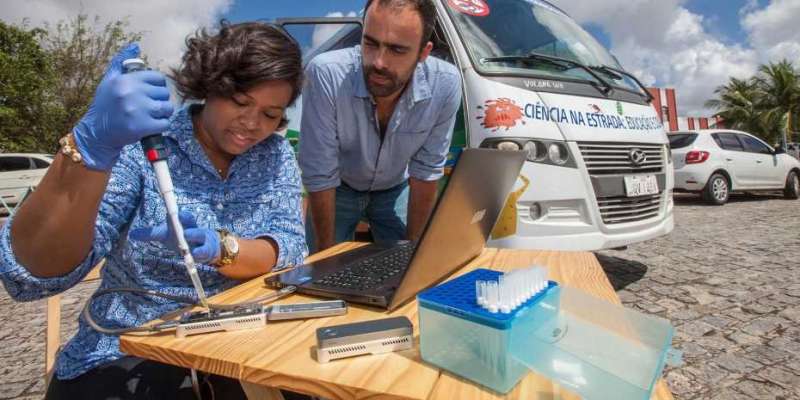Stopping epidemics in their tracks

Science and technology have the potential to stop future epidemics in their tracks, says Tanja Stadler. But this requires better collaboration between scientists and the authorities.
A genetic code that can be deciphered and analysed is not only present in humans; pathogens such as viruses and bacteria also have one. Scientists have been decoding the blueprints of pathogens since the spread of the HIV pandemic in the 1990s. Mathematical analyses of genetic sequences have been central to those efforts from the outset.
Mathematical processes can help to assess who might have infected whom with HIV. The more similar the genetic sequences in two samples are, the more likely it is that the two people infected each other. These kinds of analyses soon became part of legal proceedings relating to individuals who were accused of deliberately infecting other people with HIV.
One well-known and tragic case involved five nurses from Bulgaria and a doctor from Palestine, who were sentenced to death in Libya after allegedly infecting hundreds of children with HIV on purpose. However, analysis of the genetic material showed that the children had become infected with HIV long before the nurses arrived and the medical professionals were freed in 2007.
Tracking down a pathogen's transmission paths
In recent years, analysis techniques have become considerably more sophisticated. Revolutionary technologies can determine the genetic sequences of a huge number of samples quickly and cheaply. For instance, MinION sequencing technology is small enough to sit in the palm of one's hand. This means that in the event of an epidemic it can be used to sequence a pathogen's DNA on site in a developing country . This avoids all the legal and logistical hurdles of exporting blood samples across national borders.
Mathematical and statistical methods, too, are constantly becoming faster and more reliable. This is the area my group is active in. We are working with other scientists to further develop the BEAST software package to analyze and interpret sequencing data. We are also committed to familiarizing the scientific community with the software. To this end, we initiated an annual series of international workshops to teach people how to use it.
Thanks to the progress we've made, we can now consider not only individual potential paths for the transmission of a given pathogen – as is common in legal proceedings – but also a pathogen's paths through an entire population. With appropriate analyses and simulations, it is also possible to judge the effect of health policy measures such as border closures or flight bans.
Requirements for real-time analysis
While both MinION technology and BEAST software were employed during the West African Ebola epidemic of 2013–2016 and the latest Zika epidemic in South America, cooperation did not run smoothly among the various parties involved and processes had not yet become fully established. That explains why the analyses took time to carry out.
Full collaboration among all the various parties would enable real-time analyses. The World Health Organization would have to provide unbureaucratic support to scientists performing sequencing and the data they gather would immediately have to be made available to all scientists. On their part, scientists would have to pass their findings directly to health authorities, who would then be in a position to take the necessary steps to contain the epidemic.
In the Hollywood thriller Contagion, it takes scientists and the authorities a very long time to get to grips with a deadly pathogen that is quickly spreading around the world. In the future, effective real-time mathematical analyses and speedy implementation of derived measures will hopefully enable us to stop epidemics in their tracks before they turn into pandemics.
More information: M. L. Metzker et al. Molecular evidence of HIV-1 transmission in a criminal case, Proceedings of the National Academy of Sciences (2002). DOI: 10.1073/pnas.222522599
Gytis Dudas et al. Virus genomes reveal factors that spread and sustained the Ebola epidemic, Nature (2017). DOI: 10.1038/nature22040
N. R. Faria et al. Establishment and cryptic transmission of Zika virus in Brazil and the Americas, Nature (2017). DOI: 10.1038/nature22401
HIV-1 and HCV sequences from Libyan outbreak, Nature (2006). DOI: 10.1038/444836a

















